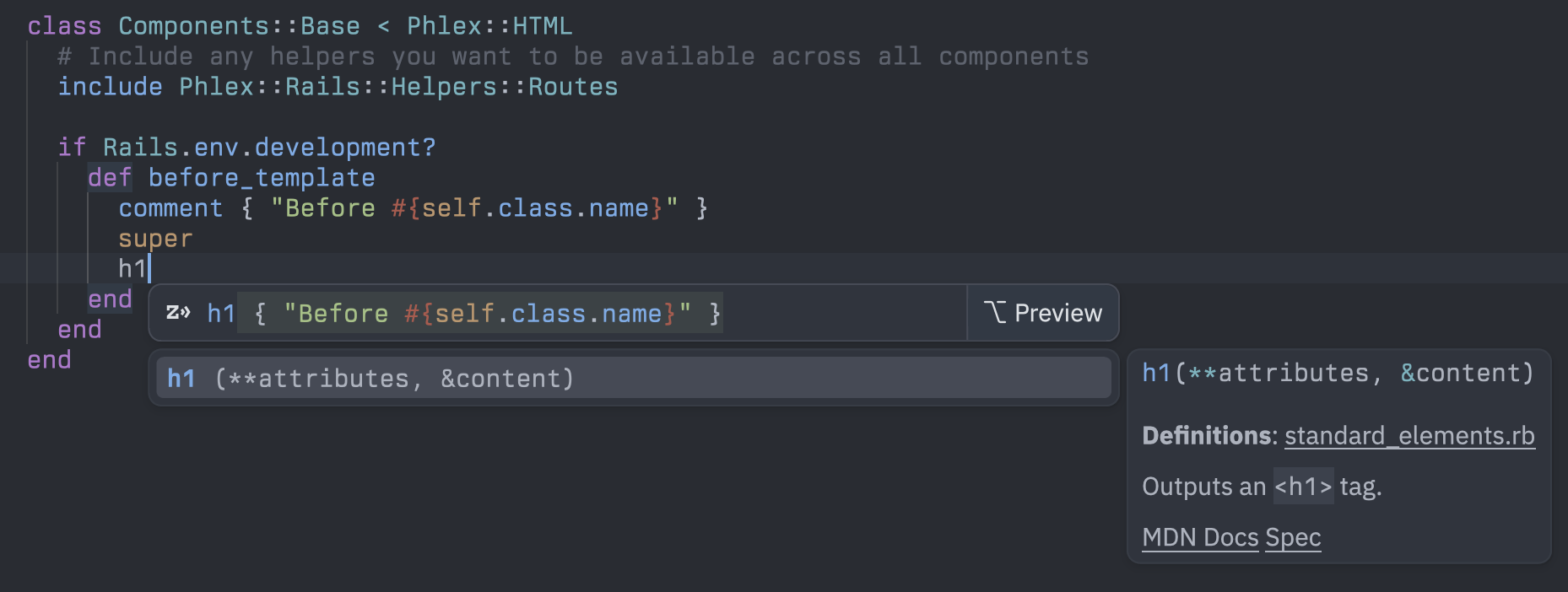It’s fun cracking open source code in libraries to see how certain abstractions are made. In the case of Phlex, it has a file that lists out all legal HTML elements in the standard_elements.rb file.
# Outputs a `<table>` tag.
#
# [MDN Docs](https://developer.mozilla.org/docs/Web/HTML/Element/table)
# [Spec](https://html.spec.whatwg.org/#the-table-element)
register_element def table(**attributes, &content) = nil
# Outputs a `<tbody>` tag.
#
# [MDN Docs](https://developer.mozilla.org/docs/Web/HTML/Element/tbody)
# [Spec](https://html.spec.whatwg.org/#the-tbody-element)
register_element def tbody(**attributes, &content) = nil
# Outputs a `<td>` tag.
#
# [MDN Docs](https://developer.mozilla.org/docs/Web/HTML/Element/td)
# [Spec](https://html.spec.whatwg.org/#the-td-element)
register_element def td(**attributes, &content) = nil
# Outputs a `<template>` tag.
#
# [MDN Docs](https://developer.mozilla.org/docs/Web/HTML/Element/template)
# [Spec](https://html.spec.whatwg.org/#the-template-element)
register_element def template(**attributes, &content) = nil
# Outputs a `<textarea>` tag.
#
# [MDN Docs](https://developer.mozilla.org/docs/Web/HTML/Element/textarea)
# [Spec](https://html.spec.whatwg.org/#the-textarea-element)
register_element def textarea(**attributes, &content) = nil
This is a very concrete approach to abstracting HTML, and its one of the reasons I like Phlex. It’s a very well built bridge that connects HTML and Ruby in a way that makes it easy and enjoyable to work with both.
Language server integraton
It goes beyond that though. If your editor supports language server protocol (LSP), they show a link to the MDN documentation for each element and a WHATWG link to the spec.

It’s really lovely how much attention to detail Joel Drapper put into Phlex and the tooling around it.
